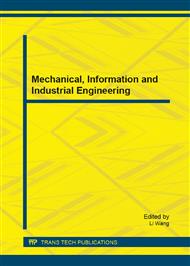p.633
p.639
p.644
p.648
p.652
p.656
p.660
p.664
p.668
Fast Text Processing for Interlaced Sports or News Videos
Abstract:
Interlaced scanning has been widely used as a trade-off solution between picture quality and transmission bandwidth since the invention of television. During the past decades, various interlaced-to-progressive conversion algorithms have been proposed to improve subjective quality or coding efficiency. However, almost all the researchers concentrate on general cases, without making full use of specific application scenarios. Based on extensive investigations, eliminating visual artifacts in areas of subtitles and station captions for interlaced sports and news videos is still an unsolved problem, which will be addressed in this paper. Firstly, motion estimation is performed between field pictures. Secondly, text edge detection is proposed for sports and news videos. Finally, different processing strategies are applied to text regions and non-text regions. Experimental results show that the proposed method can generate much better text content than existing algorithms. In addition, it is quite stable for non-text parts.
Info:
Periodical:
Pages:
652-655
Citation:
Online since:
March 2015
Authors:
Price:
Сopyright:
© 2015 Trans Tech Publications Ltd. All Rights Reserved
Share:
Citation:


